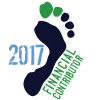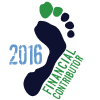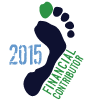Jason, I just want to add, without, hopefully opening up another can of worms, as is my wont, that unnecessarily activating muscles also plays into the cadence debate, as I'm sure you know. Stride rate, or cadence, is largely a function of muscle activation, while stride length is largely a function of force application. If you increase stride rate consciously in order to diminish stride length in overstriders, you use more energy in muscle activation and less in force application. Fine, if it solves the problem of overstriding and its attendant evils. However, if one isn't overstriding, but nonetheless consciously manipulates one's cadence to achieve the mythical 180 stride rate, you may end up with a suboptimal muscle activation to force application ratio. That is, you may be running less efficiently, especially at slower paces where even elite athletes naturally fall below 180 steps per minute, because too much of the work is being done through muscle activation and not enough through force application.
As for the recovery phase, I don't think it is 100% passive, but more like 70%. Maybe it's the hip flexion that accounts for the 30%? As I think Steve Magness points out, even in people with spinal cord injuries who have lost control of their legs, the leg will recoil forward as a passive reflex if you pull it backward and release it. I guess the extra 30% or so helps the leg get back a little faster and helps align it properly for foot strike/landing.
Also, I was wondering what percentage of the people you coach seem to have a fairly natural gait or 'proper form' without any coaching, or are at least able to tweak their form over time largely through proprioception and a little intellectualization without any real need for coaching. In other words, are some of us justified in believing that our 'just run' approach is valid, or are we deluded?
Finally, I would strongly urge anyone interested in these issues, either for fun or to improve your running, to read Steve Magness's blog The Science of Running. It's not that well organized, there are lots of typos, and the posts are annoyingly not dated, but I've found that 80-90 percent of what I wanted to know about running can be found right there. Plus you can read up on the Pose versus science debate in the comments sections.






























